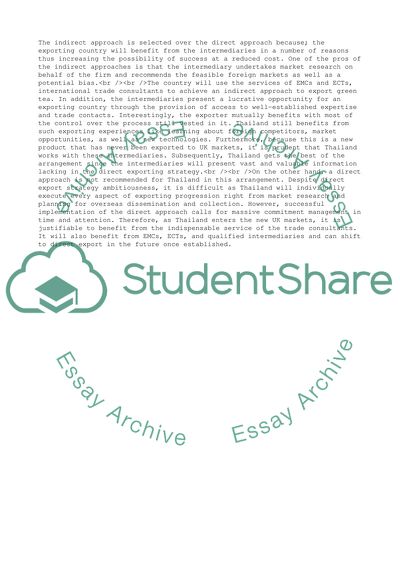Cite this document
(Export Strategy for Green Tea from Thailand to UK Case Study Example | Topics and Well Written Essays - 1750 words - 1, n.d.)
Export Strategy for Green Tea from Thailand to UK Case Study Example | Topics and Well Written Essays - 1750 words - 1. https://studentshare.org/business/1867024-develop-an-export-strategy-for-an-organisation
Export Strategy for Green Tea from Thailand to UK Case Study Example | Topics and Well Written Essays - 1750 words - 1. https://studentshare.org/business/1867024-develop-an-export-strategy-for-an-organisation
(Export Strategy for Green Tea from Thailand to UK Case Study Example | Topics and Well Written Essays - 1750 Words - 1)
Export Strategy for Green Tea from Thailand to UK Case Study Example | Topics and Well Written Essays - 1750 Words - 1. https://studentshare.org/business/1867024-develop-an-export-strategy-for-an-organisation.
Export Strategy for Green Tea from Thailand to UK Case Study Example | Topics and Well Written Essays - 1750 Words - 1. https://studentshare.org/business/1867024-develop-an-export-strategy-for-an-organisation.
“Export Strategy for Green Tea from Thailand to UK Case Study Example | Topics and Well Written Essays - 1750 Words - 1”. https://studentshare.org/business/1867024-develop-an-export-strategy-for-an-organisation.


